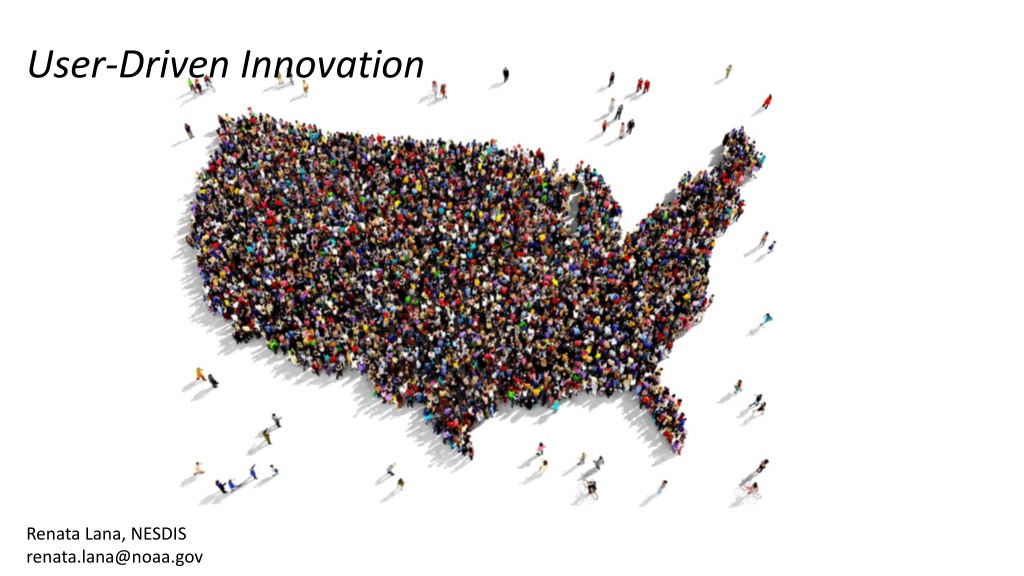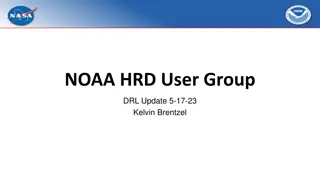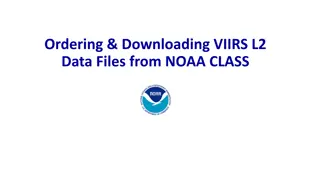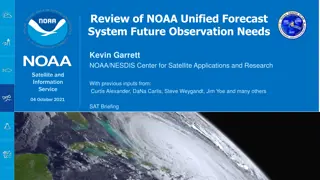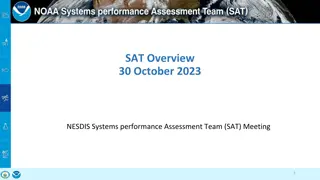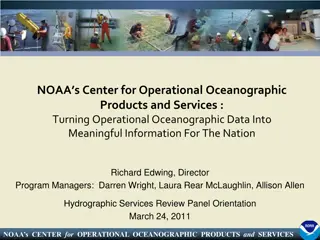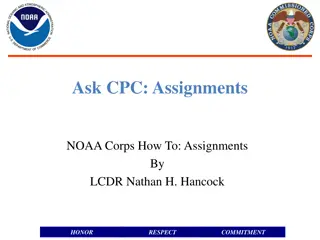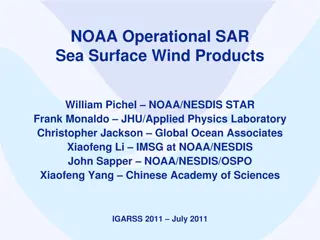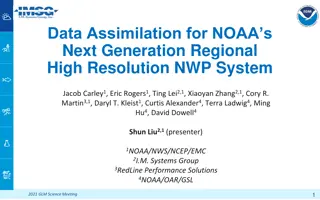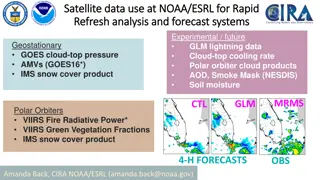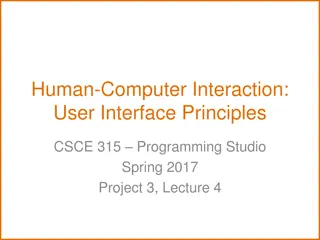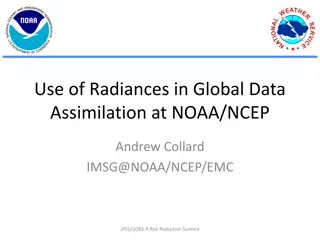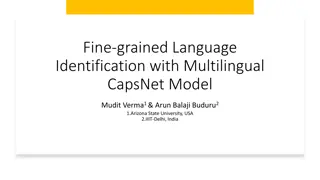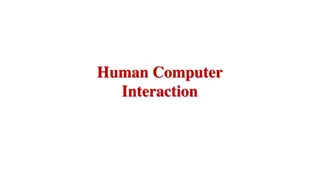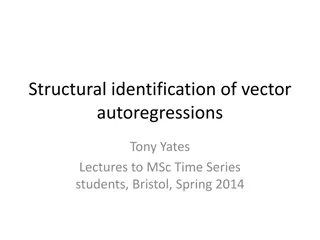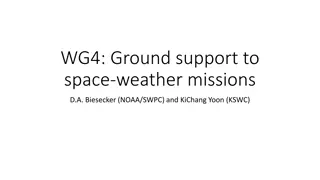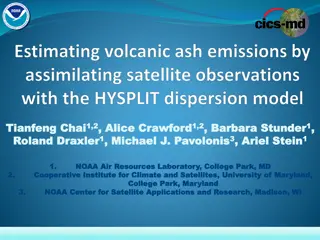NOAA's User Needs Identification Strategies
NOAA employs various user needs identification strategies, including user interviews, diary studies, persona building, task analysis, journey mapping, and more. By observing users, their environment, and asking the right questions, NOAA can uncover real needs effectively.
Download Presentation

Please find below an Image/Link to download the presentation.
The content on the website is provided AS IS for your information and personal use only. It may not be sold, licensed, or shared on other websites without obtaining consent from the author.If you encounter any issues during the download, it is possible that the publisher has removed the file from their server.
You are allowed to download the files provided on this website for personal or commercial use, subject to the condition that they are used lawfully. All files are the property of their respective owners.
The content on the website is provided AS IS for your information and personal use only. It may not be sold, licensed, or shared on other websites without obtaining consent from the author.
E N D
Presentation Transcript
User-Driven Innovation Renata Lana, NESDIS renata.lana@noaa.gov
Innovation is . . . technological invention used and adopted The adoption of a new idea almost always entails the sale of a new product. (1962, Sociologist E.M. Rogers)
What are user needs, and how do you identify those?
Needs Requests Requirements This year we will sell about one million quarter-inch drill bits. Our customers do not need quarter-inch drill bits. Our customers need quarter-inch holes. (Director of Marketing, Electric tool maker.)
Asking Users What They Need Doesnt Work They don t know what s possible. Or . . . They will only share with you what they think you can take care of. Or . . . Users tend to think of features , not needs. Or . . . They will tell you everything you can do for them, but what they ask for may be way down in their list of what is really important to them.
Whats the real need? Request: We need a way to reduce wrinkles Need: We need a way for wrinkles not to be seen
How do we uncover needs? 1.How could users do their job faster, with less variability, or more efficiently? 2.How are our users modifying our existing products or creating workarounds? 3.How does the user react to the initial prototype? 4.What drivers will emerge when current drivers are satisfied? 5.How will the future affect users? (trends, tech forecasting, scenarios, etc.) Observe our users, observe the environment, and ask the right questions.
Which of these strategies does NOAA use to identify user needs? User interviews Diary studies Persona building Task analysis Journey mapping Pluralistic walkthrough Card sorting Social media monitoring Forum post analysis Benchmark testing Search-log analysis Ethnographic research Longitudinal studies Online surveys First-click testing Heuristic evaluations Scenario-based tabletop exercises Observational field studies
So What Now? In 2020 we will: 1. Create a playbook for conducting coordinated and innovative user engagement across NESDIS 2. Create a centralized enterprise data repository for compiling and sharing user needs 3. Create a plan to increase staff skills in the area of user engagement
4. Create a protocol for assessing how useful, usable, and used our products and services are 5. Establish an enterprise-wide process to adjudicate between user needs. 6. Establish role clarity between product development and user engagement with checkpoints for user engagement across the product development lifecycle 7. Develop a plan for capturing and incorporating user needs into design decisions for next generation satellites (starting with GEO XO)
The riskiest thing we can do is just maintain the status quo. Bob Iger, CEO of The Walt Disney Corporation, 2005 to 2020
